Hunting can be a physically demanding sport, for both hunters and their dogs. Many hunters spend a good amount of time and money figuring out which gear is best for when they go out into the field or woods. Shouldn’t it be the same for our dogs? I know some people think that dog clothing is silly, especially for hunting dogs, but it can offer important protection. Not all dogs will need clothing or other protective gear. It depends on the conditions you are hunting in and the physical characteristics of your dog.
Does My Dog Need Protection?
To decide this, think about where you typically hunt. A dog that’s easily running through wispy broomstraw to find quail may not need any protection. On the other hand, if you and your dog hunt woodcock, you know you’re going to be in some really thick, briar-filled woods. Waterfowl hunting also has its special demands. If your dog is going to be retrieving ducks or geese out of cold water, it may need to wear a vest.
Also, consider what your dog looks like. A wiry-coated, big-boned German wirehaired pointer may tolerate cold weather and thick cover really well and not need to wear anything. On the other hand, a small vizsla with short fur and hardly any hair on its belly will likely get cold easily and also get scratched up from briars or other debris. As your dog gets older, it may need more protection than it did when it was younger.
One other important thing to think about is having your dog wear blaze orange if you hunt during deer season. Depending on what your dog looks like, it could be mistaken as a deer running through the woods. I’d highly recommend putting a blaze orange vest or bandanna on your dog if you’re going to be out in areas where others are hunting deer.
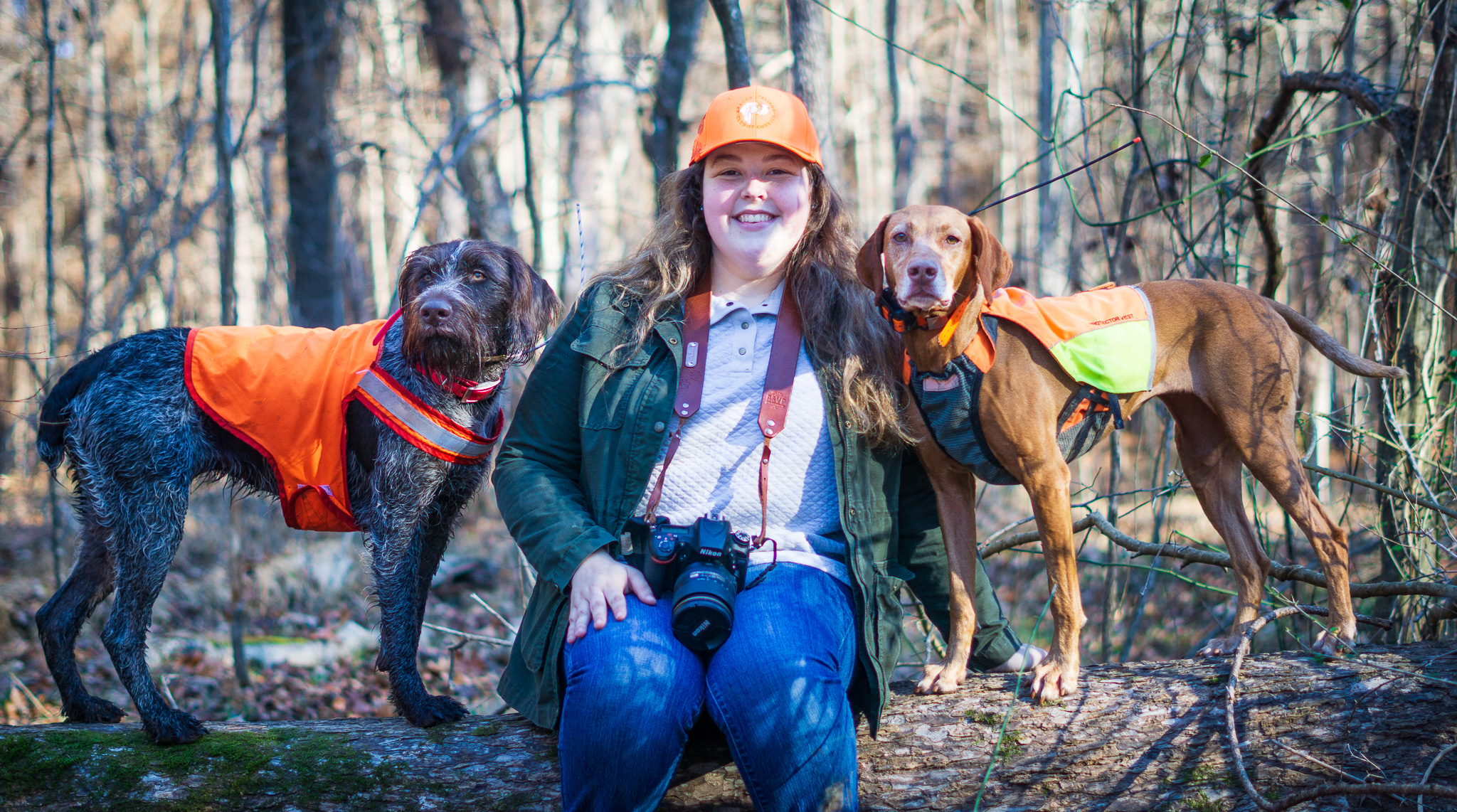
This picture was taken while hunting woodcock with friends Kailee and Suzann, and Suzann’s dog Kallie, who is a Deutsch Drahthaar. Kallie’s coat offers much more protection from briars than Zara’s does, but Kallie still wore a blaze orange vest during deer season to make her more visible.
Recommended Clothing & Gear for Upland Hunting
Vest
Probably the most “standard” piece of dog clothing for upland hunting is a vest or “skid plate”. These are designed to go around the dog’s chest and core area and give them some protection from briars, sticks, cold weather, and even hazards like barbed wire. Most come in blaze orange, to allow you (and other hunters) to see your dog more easily. There are plenty of vests on the market. A quick Google search for “upland hunting vest for dogs” reveals a lot of results. Here’s an example of the various ones that Gun Dog Supply offers: https://www.gundogsupply.com/protective-dog-vests.html.
While I haven’t tried many vest options, I’ve had really good luck with the Nonstop Dogwear Protector Vest. This vest has many features that I like:
- It’s blaze orange to make Zara easily visible to me. I like this visibility even after deer season is over. When hunting woodcock, the thick cover can make it VERY difficult to see your dog. This helps.
- The vest does not rub Zara’s armpits. She has basically no hair under her arms and we’ve had issues with other products like harnesses rubbing her raw. The cut of this vest is also ideal for a narrow pointer chest.
- This vest is extremely durable. I imagine woodcock hunting involves some of the worst cover and even though the top and chest piece of this vest take a beating, they don’t show it.
- The neck is adjustable, so the fit is good. However, this is weakest part of the vest, as you can see in the video below.
Since writing this post initially, I had the chance to review the Scheels Outfitters Performance Dog Hunting Vest. This is another solid option. You can read my full review here or see below for the video option.
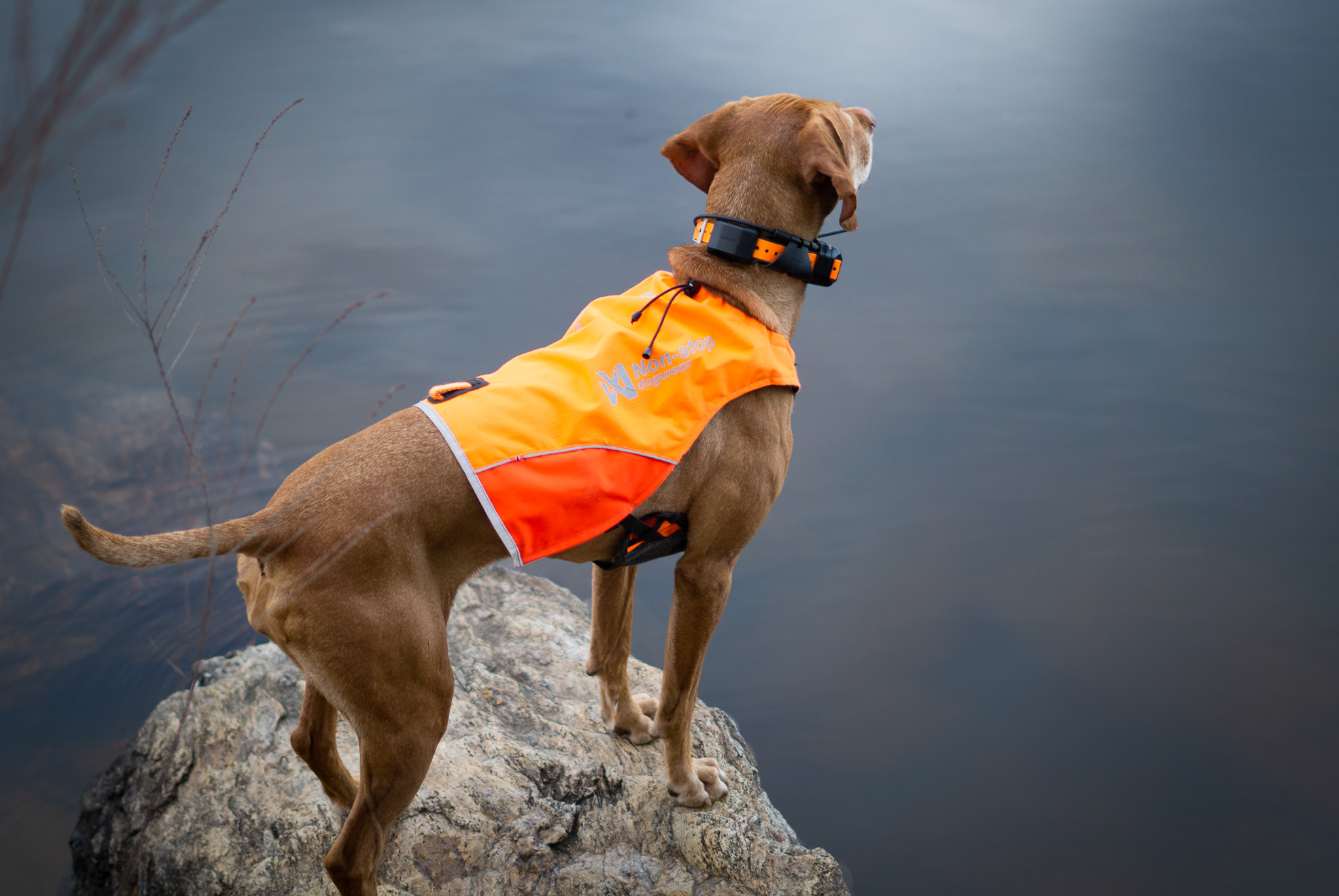
The Nonstop Dogwear Protector vest is very well-made and stands up to the thickest cover.
Eye Protection
Whether or not you need to protect your dog’s eyes depends a lot on the conditions you are hunting in and how prone your dog is to injury. For us, eye protection is essential in the woodcock woods. If Zara does not wear it, she WILL come back with third eyelid issues at a minimum, or a scratched cornea at worst. For some reason, she is very prone to damaging her eyes and has been known to injure them even when not hunting!
If you are looking at eye protection for your dog, I cannot recommend RexSpecs highly enough. These are really the only viable product on the market for dogs and they WORK. You can tell that this company put a lot of research and prototyping into making a product that’s not only durable, but stays on and is comfortable for the dog. I’ve had a single pair for three years now and they work great, despite the abuse they receive in the woods. I have replaced the lenses a few times since they will get scratched. A bonus to your dog wearing RexSpexs is that they will look awesome! :)
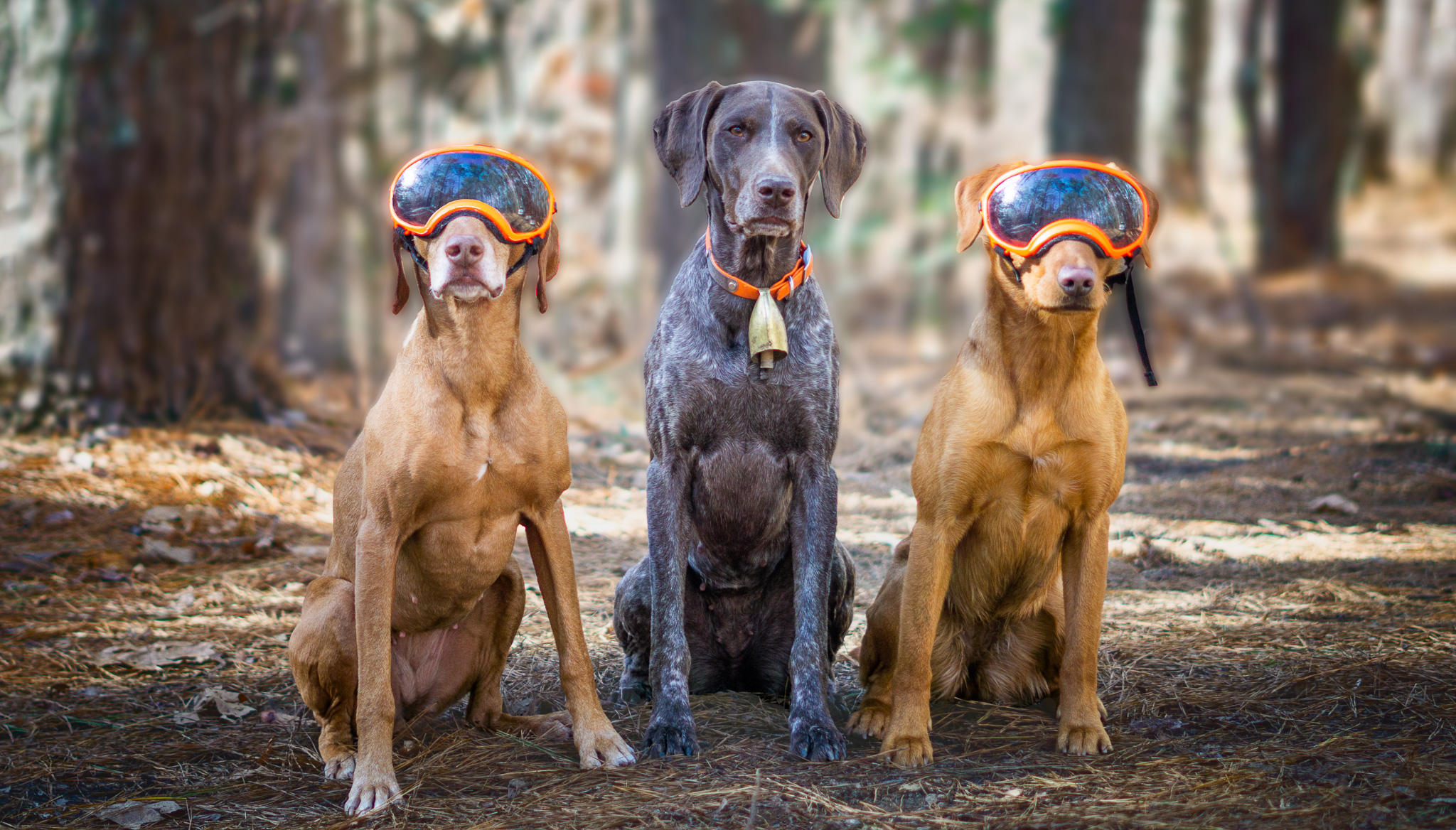
Zara and her friend Ember the Labrador retriever both wear RexSpecs for hunting woodcock. Ember is trained to flush birds and she is prone to hurting her eyes when she busts through the brush.
A couple times in this video, I said “frames” when I meant “lenses.” Oops!
Additional Clothing Options
This year, I experimented with adding another piece of clothing to Zara’s hunting wardrobe. Since she was getting so scratched up, my husband pushed me to buy something that would offer more protection that the vest. This is where the market is lacking a good product. Ideally, if Zara was going to be fully protected, I would buy some sort of bodysuit that covered her arms and legs. There are a few companies that make stretchy bodysuits, but stretchy equals not durable around briars. Despite this concern, I purchased the Nonstop Dogwear Protector T-shirt and used it this hunting season (Note: I am not sponsored by Nonstop Dogwear. They just make really nice products!). Overall, it worked well and did protect her front end better. However, it did not hold up very well, as you can see in my video below.
The other thing I have not experimented with is dog boots, although I think they could be useful for certain hunting conditions, especially rocky chukar hunting, snow, or desert conditions. Adele has a review of dog boots on her blog over at The Dog Walks Me. When we hunted four consecutive days this January, some areas between Zara’s toes had hotspots or small wounds, likely from briars getting in there. Boots would certainly help with that.
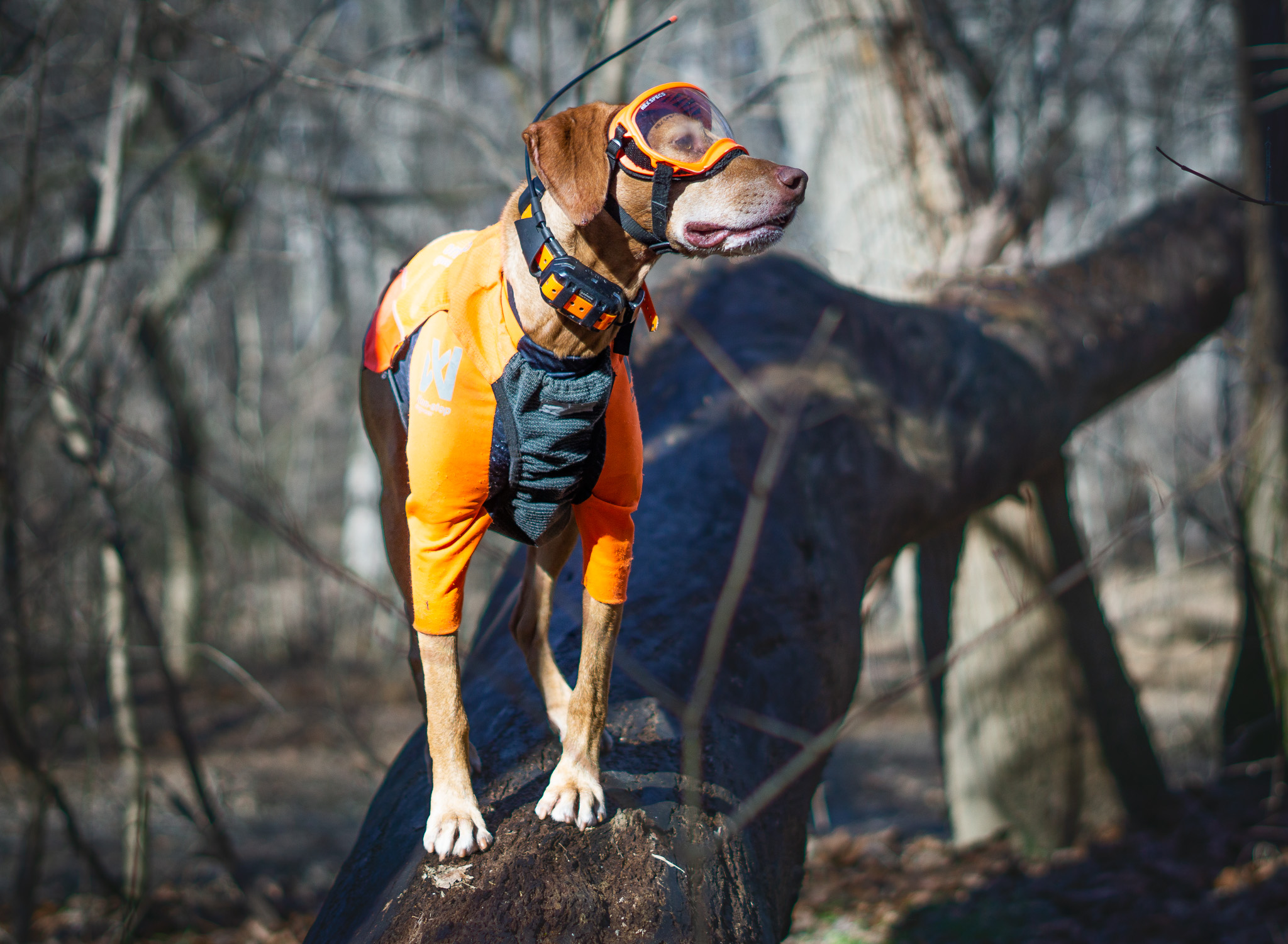
Zara wears the Nonstop Dogwear Protector T-shirt under the Protector Vest.
One other item I’ve used occasionally is a thick wax product to protect the tips of Zara’s ears called Corona Ointment. I rub some of this ointment on her ears and it protects any existing scabs and help to prevent more cuts. For this to work really effectively, you’d want to apply it frequently, which I don’t do when I’m out hunting. But I think it’s useful to have on hand especially if your dog’s ears are injury-prone.
Recommended Clothing for Waterfowl Hunting
The main clothing item that you’ll probably want for your dog when hunting ducks or geese is a neoprene vest. This type of vest will provide some warmth against cold water when they are swimming or retrieving, and will also provide protection from sticks or other debris that might other hurt their underside. The camouflage pattern will help your dog blend into the environment, too. Zara and I have not done a lot of waterfowl hunting yet, although I hope to do more next season.
The vest I have is an Avery Neoprene Boater Vest. Before I bought this vest, I did a bunch of research and asked around to see what people liked. Although there are many neoprene vests on the market, just like with upland vests, the quality and fit is questionable on many. It seems like most vests are designed for the broad chest Labrador retriever body type, which is quite different to the slender body of my vizsla. The Avery vest is not a perfect fit. I had to modify it a bit by opening up the arm holes to prevent chafing and cutting and sewing up the neck area. It still chafes a bit and water can get into the neck.
This vest is also extremely difficult to get on. The dog has to step into the arm holes and the zipper is along the back. It is not easy to do and a pain especially when it’s dark and cold out. I may have to look at better options if I start duck hunting more. For now, this vest works well enough.
I also have a special drying coat for Zara that I use when it’s really cold out. I was inspired by the Ruff and Tumble Dog Drying Coats I’d seen online. I was worried about Zara being really cold after a water retrieve, so I wanted something that I could put on over the neoprene vest. My mom is a skilled seamstress, so I had her make me a custom camo coat that is two layers. The outside layer is fleece and the inside is cut from a bath towel. It Velcros together and fits really well! Unfortunately she is not open to selling these, although I think there could be a market for them!
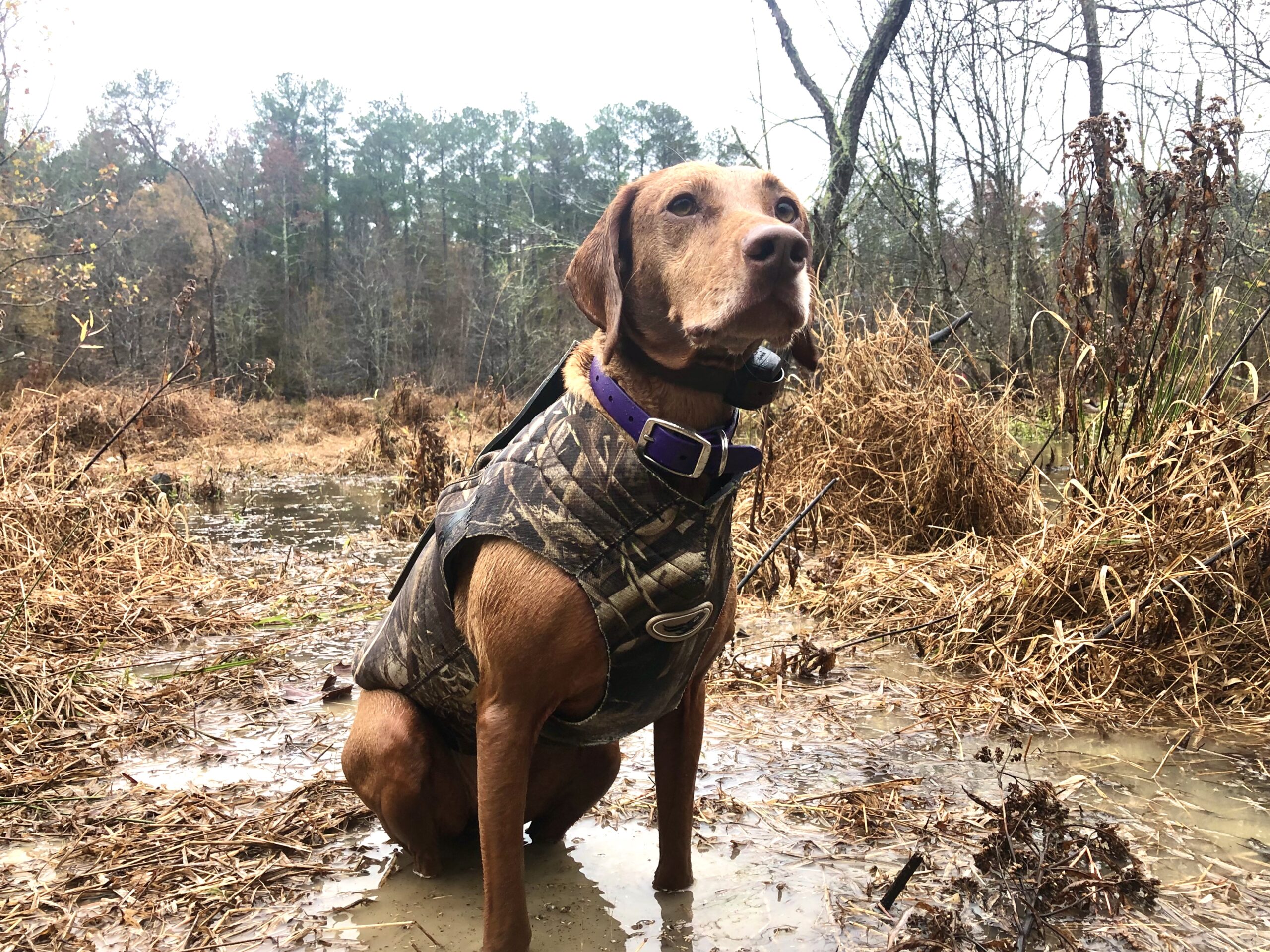
The camouflage Avery neoprene vest Zara wears for waterfowl hunting.
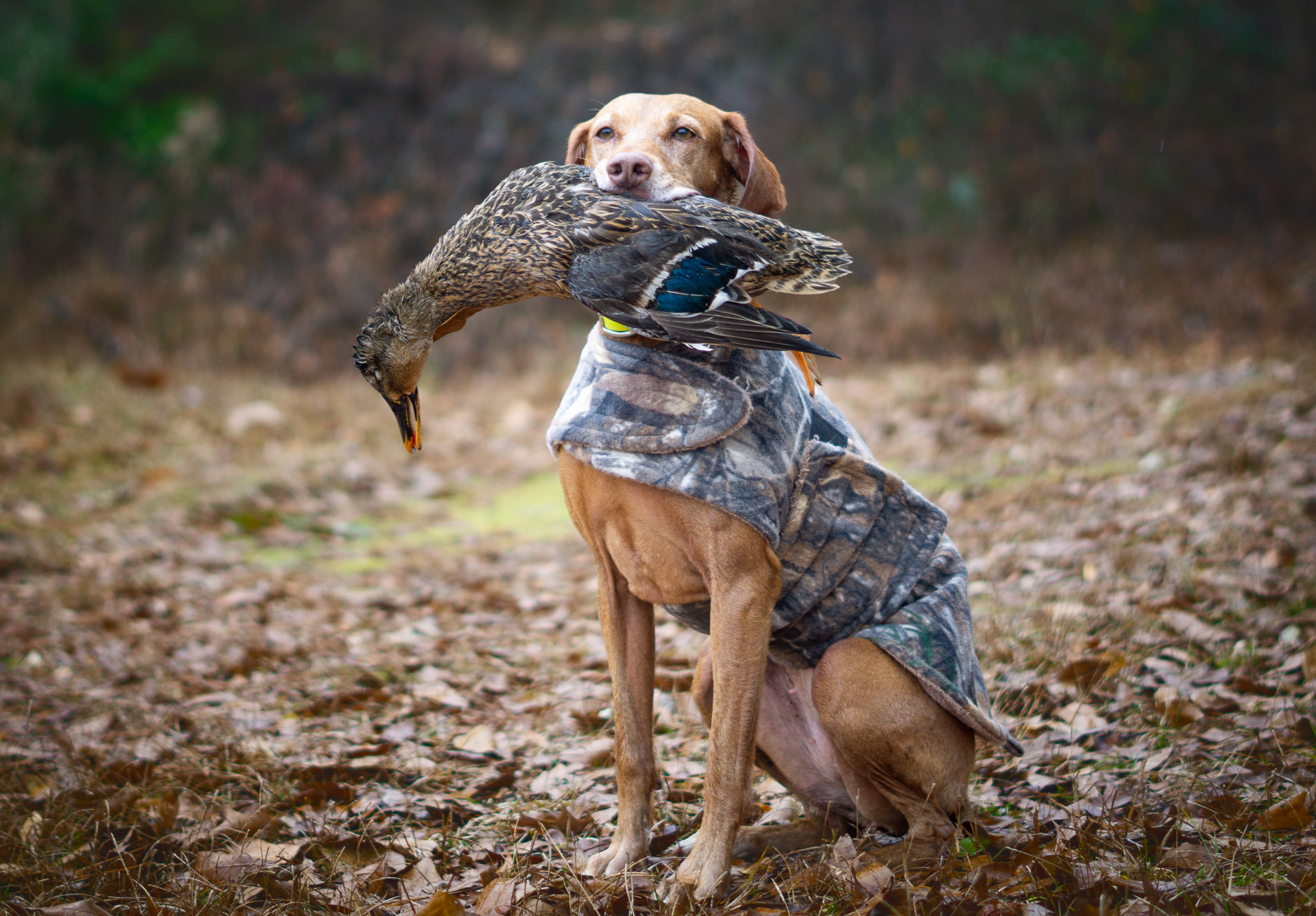
My mother made this custom fleece/terry cloth drying coat to go on top of Zara’s neoprene vest.
Have you used other products to protect your dog that you really like? Leave me a comment below.








I live in Montana. when the temperature drops below -10 we use booties. these could be helpful for lots of reasons (pointers tear toe pads–it’s a thing). these are the best I have used in 30 years of field testing. the Velcro is so strong it’s wrong. http://www.mtnridge.com it takes a while for you to know how to put them on, but it’s not hard, just requires trial and error. once they are on immediately take the pup out, then they will never mind wearing them. NEVER use booties with tread or rubber soles imho. dogs communicate through their feet.
Hi Lyra,
Good to know! Those do look nice – I haven’t heard of that brand before. If it was colder here, I imagine we’d use booties too. :)
Terry Ann